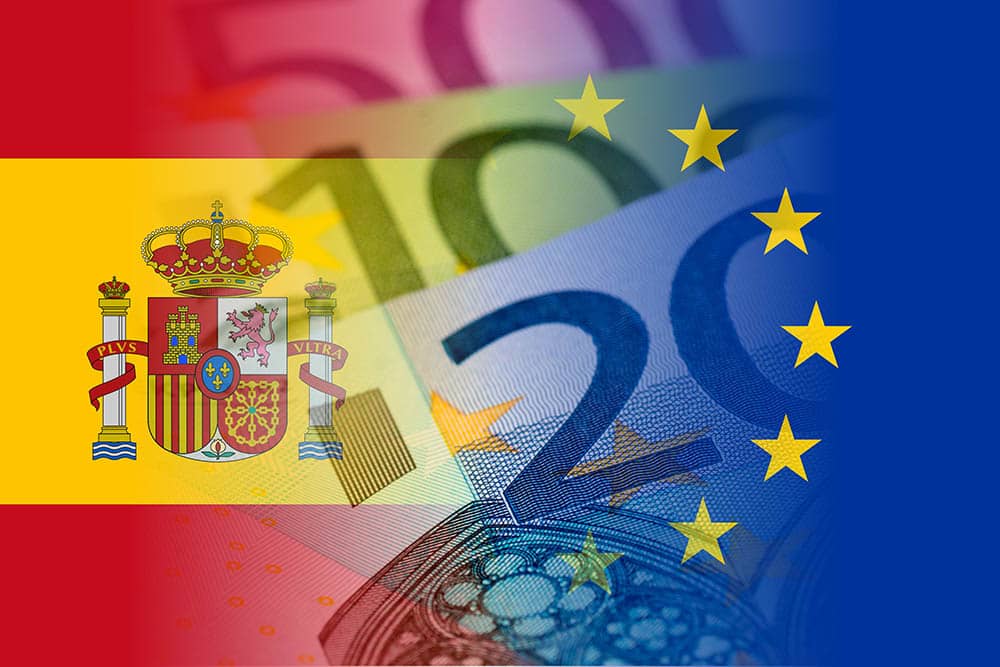GBP/EUR Rate: Eurozone Inflation Data Could Extend a 5-Day Losing Streak
- Written by: Gary Howes
-
- German and Spanish inflation figures print firm
- Suggests upside risks to the Euro
- Watch Thursday's ECB-wide inflation release
- But one tactical analyst says now could be the time to buy GBPEUR again

Image © Adobe Stock
An analyst we follow says he favours buying the Pound against the Euro at these levels on a tactical basis, although we note the Euro could benefit in the short term if Eurozone inflation numbers beat expectations.
The Pound to Euro exchange rate was higher in midweek trade at 1.1630 as the pair looked to snap a 5-day losing streak, a task not helped by firmer-than-expected inflation data out of the Eurozone.
Spain and regional Germany inflation releases suggested the official Eurozone CPI inflation release - due out Thursday - could print on the firm side, thereby supporting expectations for further European Central Bank (ECB) interest rate hikes.
German inflation rose 6.1% in the year to August, a notch down on July's 6.2%, but still ahead of a consensus estimate for 6.0%, thereby supporting expectations the ECB's tightening cycle might have to be extended.
In Spain, which has tended to lead the current Eurozone inflation cycle, consumer prices rose 2.6% year-on-year in August from 2.3% in July, and in line with the 2.6% expected by analysts polled by Reuters, but the month-on-month figure read at 0.5%, up from 0.2% in July and exceeding estimates for 0.4%.
Consequently, money markets raised bets on a September rate hike from the ECB, pricing in a 60% chance of a 25 basis-point move.
"At least at face value, today was a good day for ECB hawks, The inflation prints in Spain and Germany have clearly strengthened the case to continue hiking at the September meeting," says Carsten Brzeski, Global Head of Macro at ING Bank. "As long as the ECB sticks to its current stance of putting more policy emphasis on actual data rather than expected data, a rate hike at the September meeting has become likelier."
The data is therefore consistent with a firm short-term Euro outlook, which has underscored a decline in the value of the Pound-Euro exchange rate from highs near 1.1774 just last week to 1.1631 at the time of writing.
"Spain August CPI prints out today showed that it is still too soon to put inflation on the backburner," says Charu Chanana, Market Strategist at Saxo Bank. "Higher-than-expected inflation prints can be the trigger for one last rate hike from the ECB next month and that can boost EUR in the near-term."
That the exchange rate has failed repeatedly in 2023 to close above 1.1750 on a daily basis suggests the upside is capped above 1.17 and a retracement back towards monthly lows at 1.1550 cannot be ruled out.
Much of the short-term direction in the Euro will depend on the flavour of Thursday's all-Eurozone inflation release where headline inflation is expected to read at 5.1%, down from 5.3% previously.
The all-important core inflation reading is tipped to come in at 5.3%, down from 5.5%.
If these expectations are met, then the Euro's recent strength could fade as it would potentially tamper ECB rate hike expectations. But given the flavour of figures from Germany and Spain, an upside surprise looks increasingly likely, something that would offer the Euro some support and maintain pressure on Pound-Euro.
Technical analysis from Martin Miller, a Reuters market analyst, meanwhile finds direction in the Pound-Euro is "now in the balance".
"EUR/GBP on Tuesday managed to close above 30-DMA, at 0.8589, boosting bulls," says Miller in a study of the inverse Euro-Pound exchange rate.
Image courtesy of Reuters.
However, another close above the 30-DMA needed to keep the bias bullish," he says, "a close back below 30-DMA would be a bull trap, however".
He explains a bull trap occurs when a market breaks above a tech level but then reverses.
From a tactical position, Miller prefers selling the Euro against the Pound at 0.8590 (buying Pound-Euro at 1.1640).
Miller says Euro bulls "are trapped" as the exchange rate failed to close above the 30-DMA, now at 0.8590.
"That has likely set up a bull trap, which is usually a bearish sign," he explains.












